This post was written by Emily Becker, a Costa Rica–based freelance writer for BMTM.
Costa Rica is a nature-lover’s paradise. With so many opportunities to hike, zip-line, kayak, and partake in all kinds of outdoor activities, it’s no surprise that ecotourism is so mainstream here. Some travelers are drawn to Costa Rica for the pristine beaches, perfect for relaxing the day away; others are in it for the adrenaline-pumping activities, like white-water rafting. The beauty of this country is that you can do both!
But after over a year of living here and traveling extensively in the country, I realized there were a few things I wish I had known before my first visit in 2022.
These are some tidbits of information, pieces of advice, and general things to know before you travel to Costa Rica, so you can have an awesome time and hopefully not repeat my mistakes and faux pas:
1. Costa Rica can be very expensive.
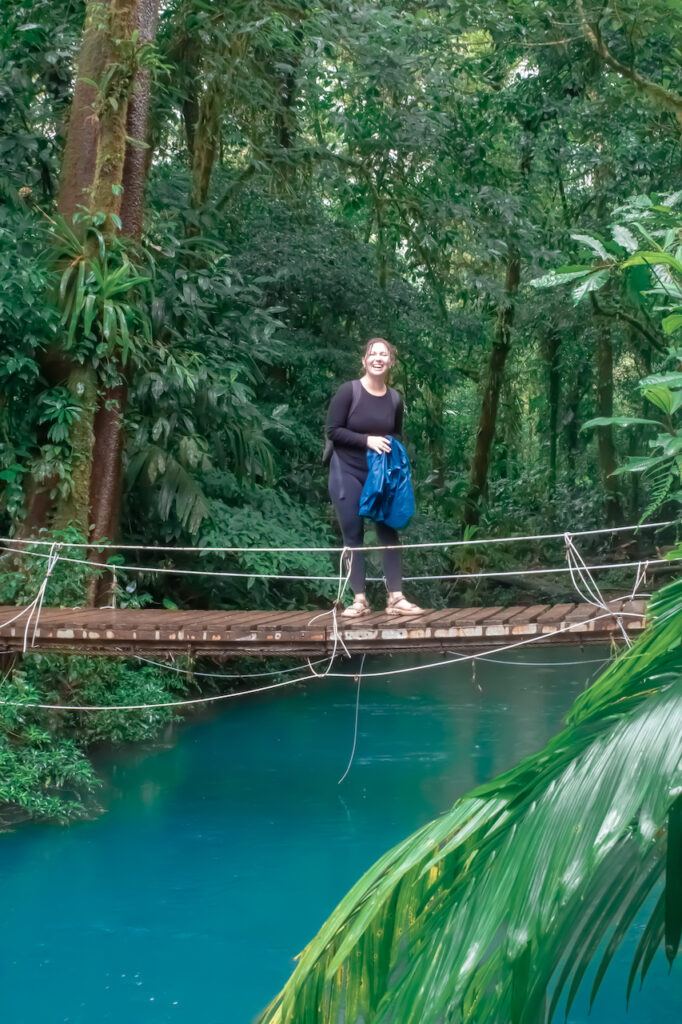
I anticipated this before my trip, but I was surprised at how expensive it was to travel through Costa Rica, even with prior knowledge that it was pricier than other Latin American countries. Especially in tourist hot spots like Manuel Antonio and La Fortuna, the cost of accommodation, food, and activities was comparable to some cities in the US. It’s pretty tough to find free things to do in Costa Rica, and entrance fees for the national parks start around $15 per day; tours start at $60.
Not all hope is lost for backpackers and budget travelers, though. There are plenty of affordable hostels in Costa Rica, many of which include breakfast and have less expensive tour options. My money-saving advice is to choose affordable lodging but splurge on activities. After all, you’ll likely be spending most of your time outside of your hotel having a blast outdoors anyway!
2. For cheap eats, go to the sodas.
One way to save money while traveling through Costa Rica is to dine in the sodas, i.e., mom-and-pop restaurants. These are always clearly marked as such, and serve up hearty meals that capture the essence of daily Costa Rican cuisine. The most typical plate is called a casado, which includes the traditional gallo pinto (rice and black beans), with some kind of meat or fish and a salad. These usually cost around 4,000-6,000 colones ($8-12 USD) and are filling.
To save money on food, you can also choose a hostel or hotel that includes breakfast and then go to sodas for lunch. Considering that entrees at restaurants in touristy areas can cost $12-20, sodas are a bargain.
-READ NEXT-
3. The weather can change in an instant.
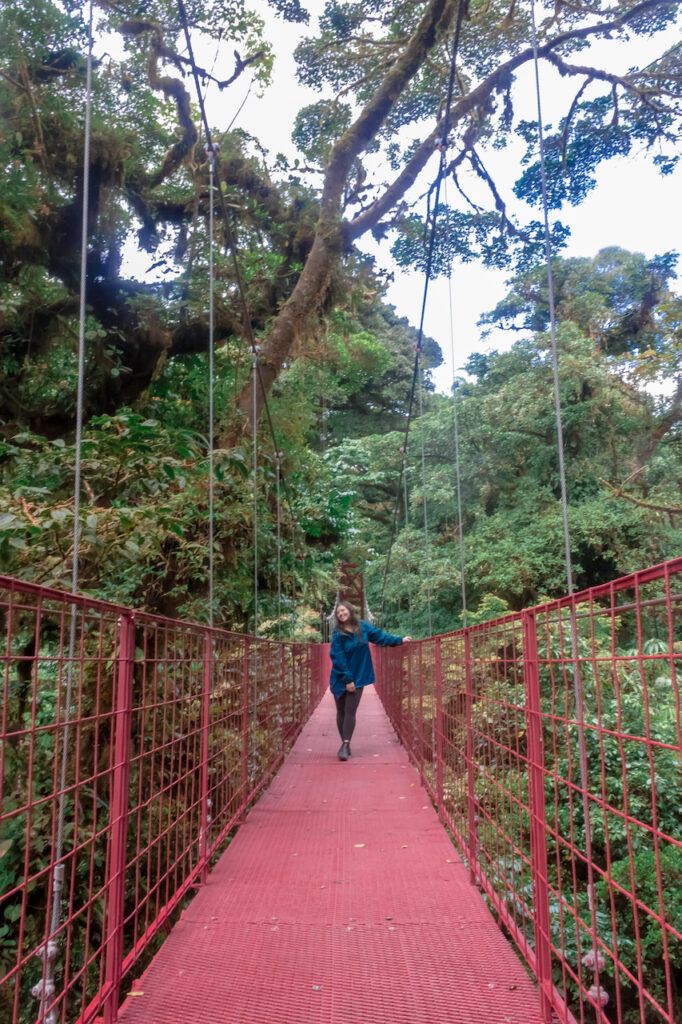
Sometimes, I still can’t believe how sunny skies can turn into a complete downpour in the blink of an eye. Flash rainstorms are common, especially if you plan to visit Costa Rica during the wet season (May to November). However, this doesn’t have to put a damper on your trip.
Go to Costa Rica prepared for heavy rain, mud, and hot and cold weather. Have at least one pair of waterproof shoes, a rain shell, a waterproof bag, and layers for chilly weather if you go somewhere like Monteverde, where the higher altitude means colder temps. If you plan to spend the day in nature at a national park, always bring your rain gear with you, even if it doesn’t look like it will rain.
4. Renting a car is the way to go…
Having a car can be a game changer in Costa Rica. Many of the places I wanted to visit were either too far (and expensive) to get to via taxis, or there was no public transport available. I met a local in Uvita who told me that having a car isn’t just a luxury, it’s a necessity.
If you want to get to a place before the tour crowds arrive, having a car is the only way to do it. For example, when I visited the La Fortuna waterfall on a tour, I didn’t have the freedom of choosing when to visit, and there were already many people there. We also encountered rain when we arrived, which I could have avoided if I had had a car.
The big downside of renting a car in Costa Rica is the price. I found out that rates start at $80/day. Booking online is a gamble, too, as often tourists are given a much higher rate when they pick up the car than what they were quoted. A rule of thumb: if the quote is less than $80/day, there’s a good chance that there will be hidden fees you’ll have to pay when picking it up.
If you decide to rent a car, do not skimp on insurance. After living here for over a year with my own vehicle, I’ve learned that accidents are prevalent and that driving here can be risky.
5. …but public transportation can be cheap and easy.
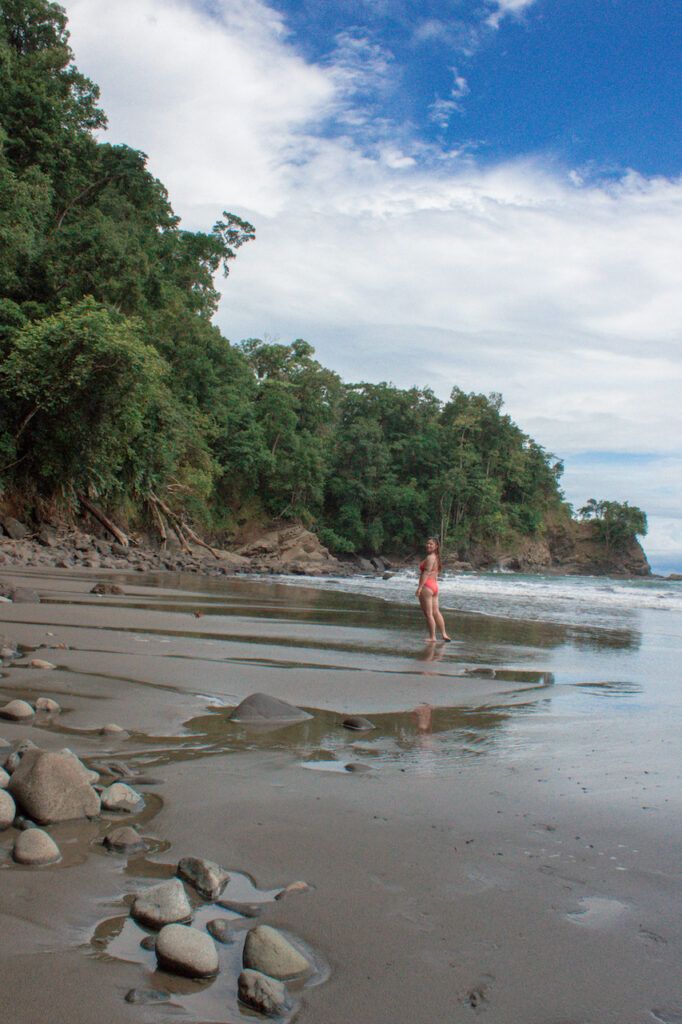
If you’re alone and traveling on a budget, relying on public transportation to get from place to place in Costa Rica is a great choice most of the time. Although renting a car allows for more flexibility for where you go and when, public transportation is totally doable between cities. Plus, it’s incredibly cheap and easy to navigate.
If you’re starting your journey in San José, you can easily hop on a bus to any of the major touristy areas in the country. For example, to get to Uvita on the Pacific coast, it only cost me about $7 USD, and the 7:30am bus arrived there around 11am, ahead of schedule. However, once I got to Uvita, it was challenging to get from place to place via public transportation, hence why I got stranded at Playa Ventanas (read about that here).
Plus, if you get somewhere like La Fortuna, where many of the main attractions are hard to reach without taking a tour, you can rent a car for just a couple of days. I wish I had known this beforehand, as it would have improved my experience there.
6. The national parks are fantastic.
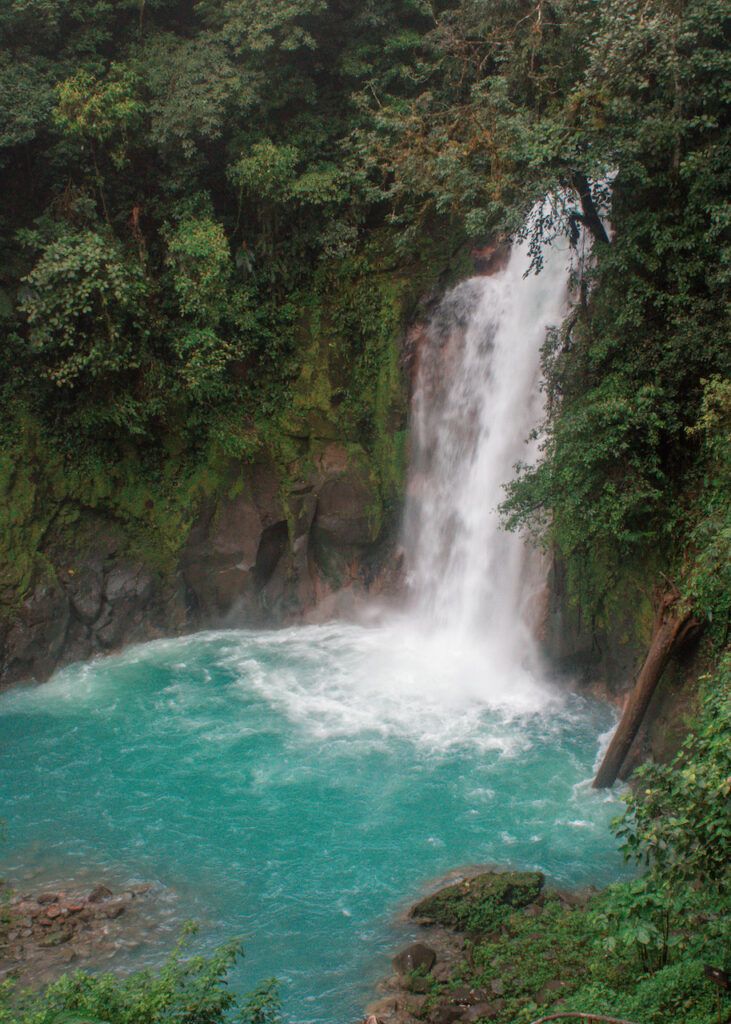
Being from the States, I have been spoiled all my life with amazing national parks. Let’s just say, the bar is pretty high. However, Costa Rica’s blew me away with their preservation, accessibility, and overall beauty. From the wild trails through Manuel Antonio to the waterfall in Tenorio Volcano and the Amazon-like canals of Tortuguero, these places are astounding.
Since Costa Rica is home to 6% of the world’s biodiversity, it’s no surprise that the parks are bursting with life. Even though I knew this, it never ceased to amaze me when I saw it with my own eyes.
Since my first trip to Costa Rica in 2022, I have visited Cahuita National Park, Irazú National Park (the Prussia section), and many others. I recommend stopping in any and all parks that are close to your route, as each of them has something different to offer, due to Costa Rica’s numerous microclimates.
7. There are wild animals nearly everywhere.

Speaking of Costa Rica’s impressive biodiversity, national parks aren’t the only places to find wild animals. From mischievous monkeys to roadside sloths and the occasional shower-drain scorpion, there seem to be wild animals everywhere here.
I wish I had known how common critters are inside accommodations. After finding a couple of them in my bag, I realized that I needed to keep it zipped at all times. Luckily, I wasn’t stung or bitten by anything, but there were a couple of close calls.
8. …but if you want to see them, hire a guide.
While wild animals are plentiful here, it isn’t always easy to see them without a guide. I’ve been lucky to see sloths on the side of the road and monkeys swinging in the trees outside my hotel window, but if you want to get the most out of the wildlife viewing here, a nature guide is your best bet. Those in Costa Rica are highly trained to spot animals, and they bring binoculars with them to help visitors get the best views.
The difference between when I went to Rio Celeste with a guide and when I went recently without one was huge. The second time around, I thought, “I’ve been here, and I’ve seen so many animals. Of course I’ll see tons this time!” Wrong. The first time I went was far better, because my guide’s expert eye caught sight of animals I would have otherwise missed.
9. The two coasts are very different.

Since I have visited both the Pacific and Caribbean coasts, I’ve seen how diverse such a small country can be.
For one, the beaches are very different. The Pacific coast has small coves, with rocky cliffs and waves ideal for surfing. The sand is mostly golden and glistens beautifully when the sun sets. I also noticed that it was much more Americanized and more touristy overall, with more expensive restaurants.
The Caribbean coast, on the other hand, has a larger Afro-Latino population and therefore a different cultural landscape than the west coast. Puerto Viejo, for example, is known for its bolder flavors, impromptu dance parties, and reggae music blasting everywhere. If you are excited to dive into Costa Rican culture, the Caribbean side is an ideal place to do it.
10. Addresses aren’t really a thing.
Even in the largest city, San José, addresses (as we know them) don’t exist in Costa Rica. Even on official documents, Costa Ricans give descriptions of their address instead of a number and a street. For example, somebody might describe their address as “a big white house next to the Catholic church.”
This might not be an issue when you travel to Costa Rica, as most taxi drivers know the main landmarks and hotels. However, if you stay in an Airbnb, it can be difficult to describe its location to a driver. In any event, make sure you have an offline map (I use the app maps.me), so you can show your driver where you want to go.
11. Sometimes, tours really are worth the money.
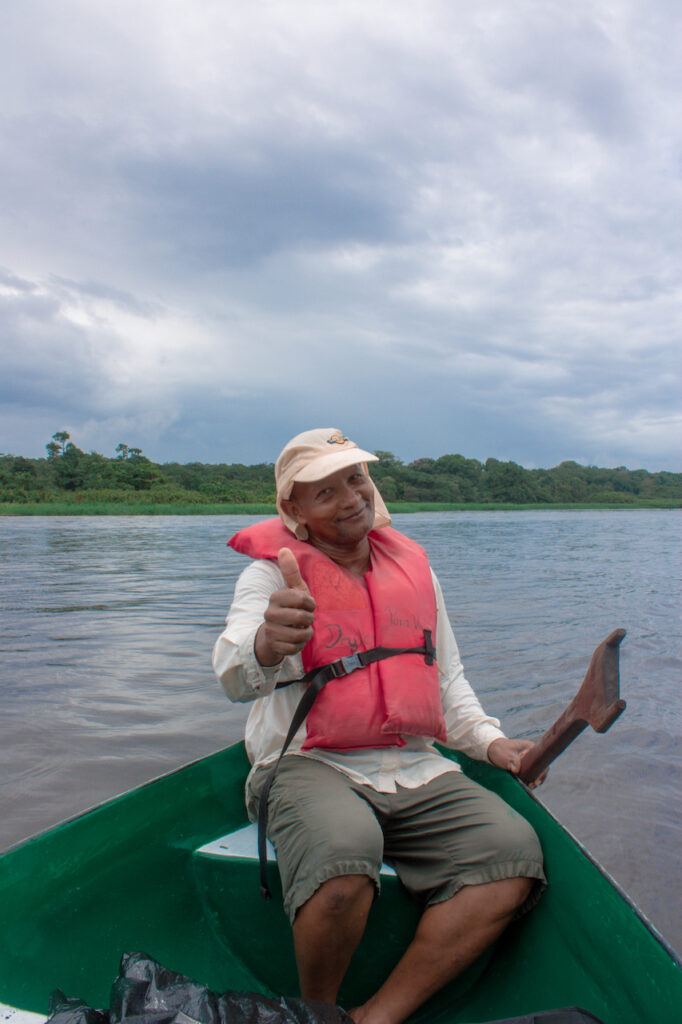
I experienced sticker shock when looking at the prices for some of the tours in Costa Rica. After going on a few, though, I realized that some of them were worth it (while others were not).
I recommend booking through GetYourGuide when you can. The platform gives a detailed description of what is included in the tour and what you can expect in terms of how long it will take, what to bring, where you’ll be going, etc.
If you wait to book your tours until you get to your destination, always make sure to do so at the tour office itself. I talked a bit about this in my Costa Rica safety guide, but basically, there are scammers on the street who try to get tourists to book with them.
Overall, the best experience I had on a tour was in Tortuguero. I booked directly with the guide himself, and his expertise, kindness, and quirkiness were what made the experience worthwhile. Plus, booking directly with the guide meant the tour was much more affordable than if it were with a large company.
You won’t find this kind of direct offer everywhere in Costa Rica, but you can look for mom-and-pop tour companies with a more down-to-earth feel.
12. Prepare yourself for tourist traps.
Beyond the abovementioned tour scams, there are quite a few tourist traps throughout Costa Rica. I find this pretty unsurprising, considering how touristy the country is overall.
One is the expensive shuttle services that are not much faster or more reliable than simply taking a public bus. If you are not renting a car, check out the public transportation options before opting for a shuttle. If you are going from San José to pretty much anywhere in Costa Rica, the bus will likely be just as easy. For other routes, like between La Fortuna and Tortuguero, a shuttle is definitely a great option, because public transportation takes twice as long. I use Rome2Rio to get a general idea of public transportation routes, but keep in mind that that it isn’t always 100% accurate.
Other tourist traps in Costa Rica include hokey restaurants with Americanized menus and astronomical prices, and overpriced souvenir shops, which you’ll likely find at the exit of national parks and ecological reserves.
– READ NEXT-
13. Get to places as soon as they open.
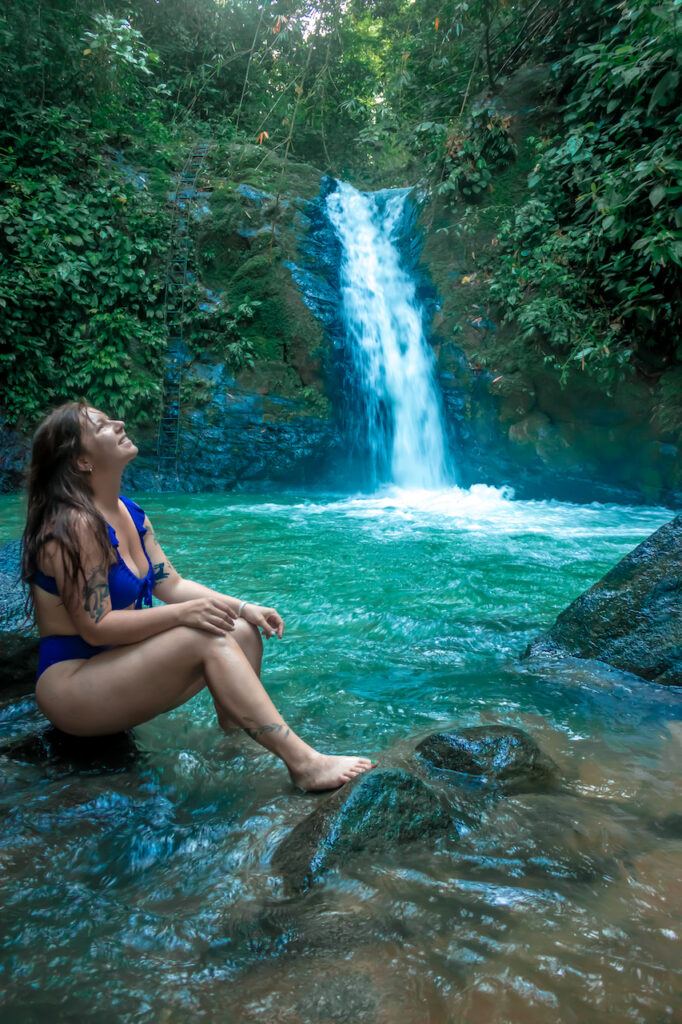
Even during the low season, from May to November, there is a steady stream of tourists in Costa Rica. That means the best places get packed in the late morning and early afternoon. If you are like me and enjoy being in nature without too many other people around, make sure to get to your destination first thing in the morning.
The sun rises around 5am during most of the year in Costa Rica, which meant a lot of very early wake-up calls for me. It was worth it, though! I enjoyed visiting the waterfalls, swimming holes, and jungle paths — and even just walking down the street — at this hour. Going to these places early also meant I could spend more time there, just soaking in the beautiful surroundings without any distractions.
Also keep in mind that tour groups tend to arrive at big attractions around the same time. I noticed that sites would get busy around 9 or 10 in the morning, then clear out around noon, then get busy again around 2 or 3 in the afternoon before the park closed at 4pm. The best time to visit busy spots, like the La Fortuna Waterfall or Manuel Antonio National Park, is right when they open (usually 7am) — or during lunchtime if you don’t mind the scorching sun.
14. Make sure to carry enough cash.
Some smaller and more remote places in Costa Rica, like Tortuguero, for example, don’t have ATMs readily available. Considering that some hotels and hostels charge a 2-5% fee to pay for accommodations with a card, having cash on hand is a good idea. Carrying large amounts of cash can be nerve-wracking, sure, but if you spread it out among multiple bags and pockets, you lessen the risk of losing it all in one go.
Also, try to have colones (the local currency) instead of dollars when possible. Although Costa Rica uses dollars, some small restaurants and shops prefer that patrons pay in colones. The value of the dollar has also been steadily decreasing since I moved here in February 2023.
15. San José is worth a couple of days.
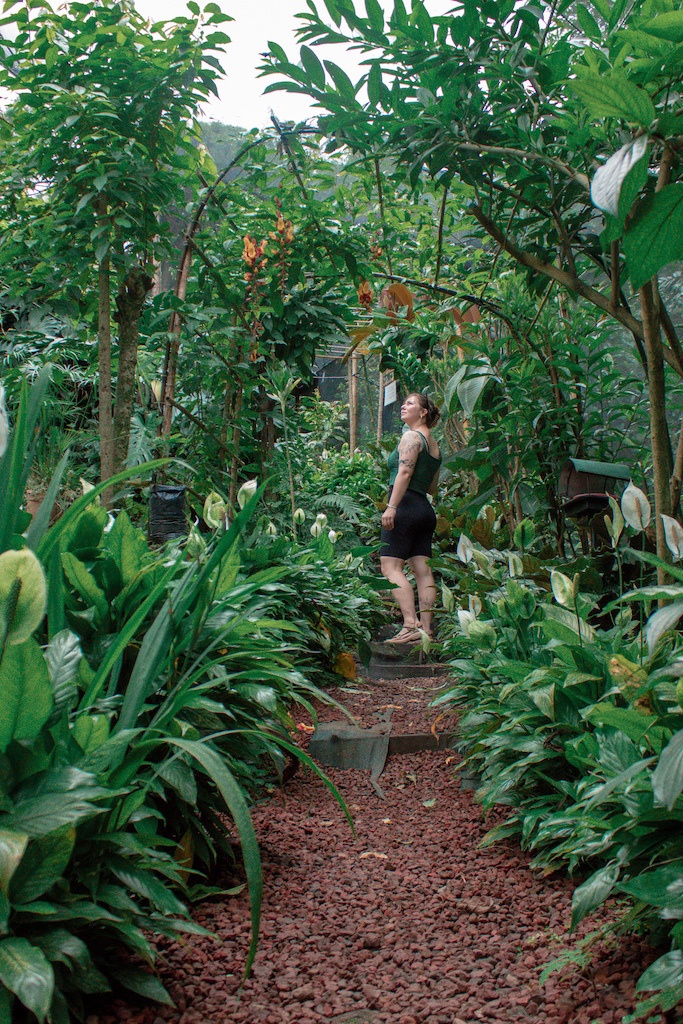
Too many travelers pass up the opportunity to spend a couple of days in Costa Rica’s capital city, San José. It has a reputation for being a dirty, even dangerous place, with little to do. I disagree with this, and I actually really enjoyed exploring San José at the beginning and end of my trip in 2022. Now, I live just 30 minutes outside of town, and I constantly find new and interesting things to do there.
San José is Costa Rica’s cultural capital. There are beautiful hotels, great museums, a thriving art scene, and some of the country’s best restaurants (like Silvestre!) and bars. I loved visiting the Spirogyra Butterfly Garden, venturing out to the Hacienda La Chimba, and checking out the nearby city of Cartago.
16. Uber is illegal but cheaper than taxis.
In larger cities like San José and even La Fortuna, Uber is available, safer, and even cheaper than taking a taxi. However, it’s technically illegal throughout Costa Rica. It’s common for drivers to ask you to sit in the front seat so as not to raise suspicions that they are driving for Uber. I’ve never had an issue taking Ubers in Costa Rica, though.
Also, considering the point above about addresses, Uber is much easier to use because your driver has your exact location and that of your drop-off point. Otherwise, it can be hard to explain to a taxi driver (especially if you don’t speak Spanish) where you need to go.
17. A little Spanish goes a long way.
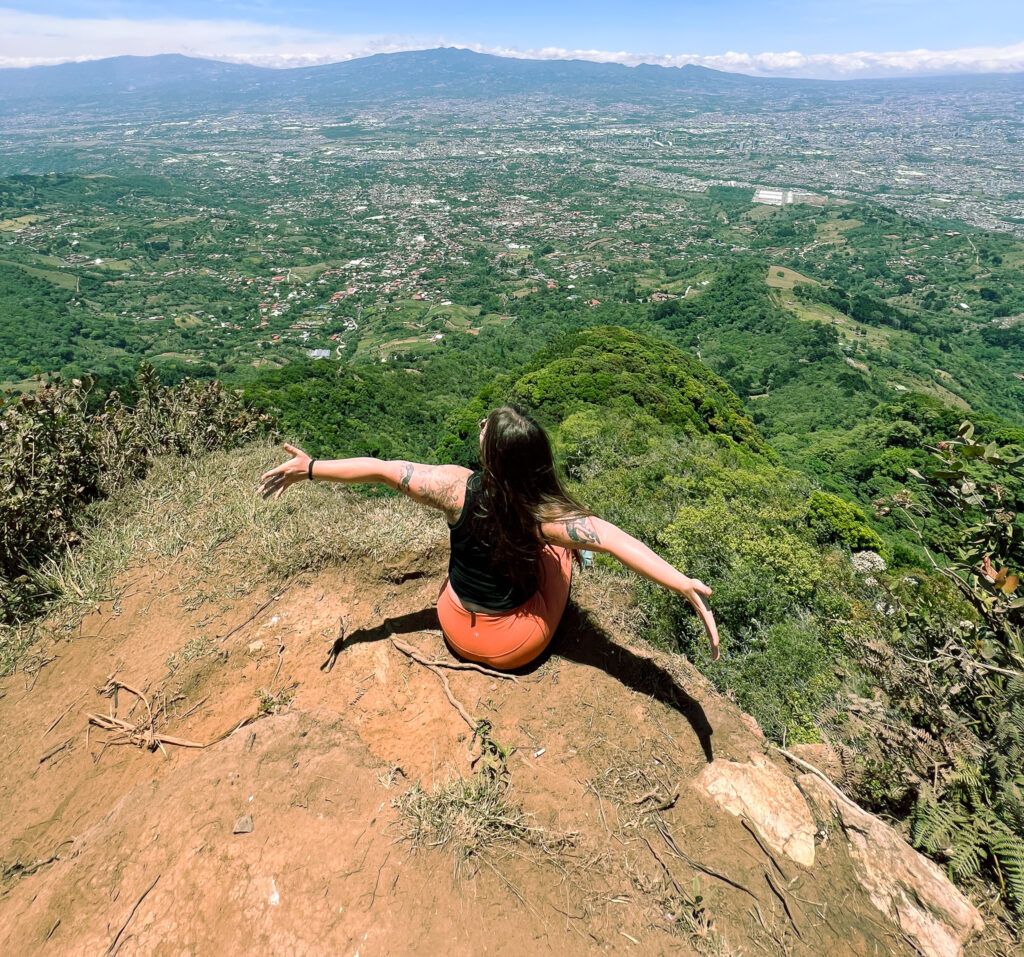
I might sound like a broken record on this one, but knowing (at least) a few phrases of Spanish can be a game-changer in Costa Rica. Locals appreciate it when visitors speak Spanish, even if it’s just “hola” or “gracias.” I know my life is significantly easier here because I speak Spanish, and that was also true when I came here for the first time as a backpacker.
If you don’t have any Spanish knowledge before you come, I recommend downloading an offline translator if you need to communicate in a pinch. While many Costa Ricans speak English, there’s no guarantee that your taxi/Uber driver, waiter, etc. will.
18. Costa Rica’s tourism infrastructure is one of the best in the world.
Although having some basic Spanish knowledge is helpful, Costa Rica’s impressive tourism infrastructure makes it one of the easiest places to travel for non-Spanish speakers and first-time international travelers. Companies like Intrepid and G Adventures offer multiday (even multiweek) tours on which everything is meticulously planned. Hotels often offer airport pickup and dropoff, along with many other perks. And nearly 13% of the population works in tourism. That means that there are people willing to help visitors around every corner.
19. Yes, you can drink the tap water.
I lived in Mexico for four years before I moved to Costa Rica, so imagine my surprise (and excitement!) when I learned that you can drink the tap water here. There are exceptions, but there will likely be signs letting you know if you can’t drink it. This is a stellar tip, because you can bring a smaller water bottle with you on hikes or long walks, knowing that there will be places where you can fill it.
20. Tips are usually included in the final price.
In Costa Rica, most restaurants will charge a 10% service fee, which is the same as the tip. If this has been added to your bill, there’s no need to tip. Of course, if you’d like to tip your wait staff, go for it! But it’s certainly not expected.
***
There are some things that are hard to prepare for before heading to a new place. These tips were all things I either didn’t know or only knew a little bit about before I went for the first time. I hope they help you prepare for your trip, so you can enjoy the magic of Costa Rica.
If you’ve been to Costa Rica, what other helpful tips do you wish you knew before you went?
*Some links in this post are affiliate links for products and services we personally use and love. Any purchase you make through them supports us at no extra cost to you. Thanks so much!
cupskill says
Nice place…….
GG says
Hi Emily:
Thanks for these important tips to give us a step up regarding making our Costa Rica trip that much better and how to avoid pitfalls. I have not been to Costa Rica, but one thing that I did not think of doing until you described Costa Rica would be to try the sunrise over the ocean on a Caribbean beach and on the same day see the sunset over the ocean on the Pacific side! Is that doable and/or worth it? 🙂
Emily says
Hey Gil! Yes, in theory you could drive from one side of the country to the other to see the sunrise & sunset, but I’d guess that it would mean spending the whole day in the car. Maybe not worth it as the sunsets are only vibrant and colorful if the weather conditions are right (ie. not raining). If you try it, let me know how it works out! Sounds like a fun mission. 🙂
RUSTY GREEN says
WHICH IS THE BEST PLACE TO LIVE COSTA RICA OR PANAMA CANAL.. IM RETIRED MILITARY AND POLICE.. I DO NOT WANT TO LIVE IN THE U.S. IM SOO TIRED OF PAYING MY 2700 DOLLARS HOUSE PAYMENT..AND THE CRIME IS JUST CRAP.. IF YOU HAVE A ANSWER…
Emily Becker says
Hi there! I’ve lived in Costa Rica for about a year (moved in February 2023) and there are a few distinct areas where retirees tend to settle. One is the central valley (near San José, specifically the areas of Santa Ana and Escazú), another is Guanacaste (near Nosara), and another is the mountainous region parallel to the Pacific Coast (Tinamaste). The cost of living here is comparable to some places in the USA, but the quality of life (in my opinion) is much better. Fresh food easily accessible, low crime rates, and stunning nature everywhere in the country. I recommend looking for Facebook groups with retirees in Costa Rica and asking around there. 🙂 Pura vida!
Gaye says
Great info, thank you!
Andrea says
I am leaving in a week for CR and am solo. I appreciated your articles and found them helpful. Thank you for sharing!!
Dee says
Thank you for all the tips! I’m traveling with a group of women this October for a woman’s retreat . We will e spending one night in San Juan before heading to our destination (4 hours away)! I’m really thankful for you telling me that Uber is illegal!
Emily says
Hi Dee! Uber is technically illegal but it’s totally fine to use in Costa Rica. The driver will just ask you to sit up front. Keep in mind that Uber isn’t widely available and is mostly used in San José and the surrounding areas.
MIGUEL BONILLA says
Hi Emily, I’m traveling with my kids to Costa Rica on February, what is my best option to get to the fortuna from the airport? And thank you for all your tips. Miguel